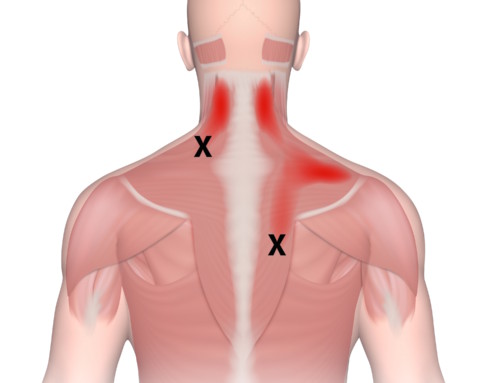Lateral Hip Instability
and What To Do About It.

Lazy Butt Syndrome: What’s the problem?
Your gluteus medius and gluteus minimus provide lateral stability to the pelvis as you move forward. When these muscles don’t engage, your femur rotates inward and your hip collapses. This excessive motion in the pelvis increases instability in your knees, ankles, and feet. Unstable levers cannot tolerate high loads (either intensity or volume) and tend to get injured.
The thing about non-firing glutes is that they are silent culprits. They probably feel great, but this is because they aren’t doing any work! Your quads, TFL, or hamstrings are taking up slack for your inhibited glutes—performing a function they weren’t designed to perform—and they become overloaded as a result.
But I’m not lazy! I work out a lot! Why is my butt such a deadbeat?
Most of us spend our lives in a perpetual state of flexion. Long hours sitting at our desks or in our cars shorten the hip flexors on the front of the pelvis and turn off the glutes on the other side. Our lifestyles create inflexibilities and weaknesses that translate into postural imbalances when we run.
Runners are especially prone to this particular imbalance because they tend to focus their efforts training the muscles that drive them forward (quads, calves, etc.), and not the smaller muscles that stabilize the pelvis. (Climbers and skate skiers for example typically do not present with the same muscle imbalances, as their sports require powerful lateral stabilizers.)
This might not be news to a lot of you. Maybe you’ve been doing your glute exercises religiously: clamshells, squats, fire hydrants, lateral walking, bridges…but has it worked?
Two Reasons Your Strength Exercises Aren’t Working:
- You can’t strengthen a muscle if it is not turned on in the first place; other muscles will take up the slack. If you are feeling the stress in your back, hamstrings, or quads instead of your glutes, you are likely reinforcing the imbalances you are trying to correct. You have to facilitate the glutes before you can strengthen them.
- Your glutes need to be stronger, but more importantly they need to be smarter. They need to kick in and stabilize the pelvis the right amount at the right time. This is called dynamic stability—and it will determine how well your body can stabilize itself as it moves forward. Timing is important—for instance, a 2013 study of runners with Achilles pain showed that their glutes fired later and for a shorter period of time than runners without Achilles problems2.
So How Do I Get My Glutes To Do Their Job Again?
Improvements in dynamic stabilization come from refining the neuromuscular system. Neuromuscular control means your brain and your muscles are able to skillfully recruit the right muscles at the right time with the right force to perform a dynamic movement. One way to do this is by increasing proprioception2. As it turns out,
One of the best ways to improve proprioception of a muscle is to stick a needle in it.
A 2013 study found that electro-acupuncture was more effective than conventional physiotherapy in increasing proprioception in patients with functional ankle instability3. I have a specific acupuncture technique that facilitates the gluteus medius and minimus in a single treatment. Every Time. You will feel the difference; many of us don’t know what it feels like to move with our glutes engaged! The best part is that those knee and lower leg problems farther down the kinetic chain will often resolve or be prevented altogether once you get your glutes doing their job4.
Certainly, a few well-placed needles will not correct a lifetime of poor posture and compensatory running patterns, but it may be the best place to start. The specifics of improving proprioception and neuromuscular control in your lateral stabilizers is the topic for a future blog post, but acupuncture can and should be an integral part of that process.
Have you suffered from lower kinetic chain injuries related to Lazy Butt Syndrome? What has worked for you?
References:
- Smith, Melinda M., et al. “Neuromotor control of gluteal muscles in runners with achilles tendinopathy.” Medicine and science in sports and exercise (2013).
- Dicharry, J. (2013). Anatomy for Runners: Unlocking Your Athletic Potential for Health, Speed, and Injury Prevention. Skyhorse Publishing, Inc.
- Yan, Z. H. U., et al. “Effects of electroacupuncture on the proprioception of athletes with functional ankle instability.” World Journal of Acupuncture-Moxibustion1 (2013): 4-8.
- Ramskov, Daniel, et al. “High Eccentric Hip Abduction Strength Reduces the Risk of Developing Patellofemoral Pain Among Novice Runners Initiating a Self-Structured Running Program: A 1-Year Observational Study.” Journal of Orthopaedic & Sports Physical Therapy Early Access (2015): 1-29.




